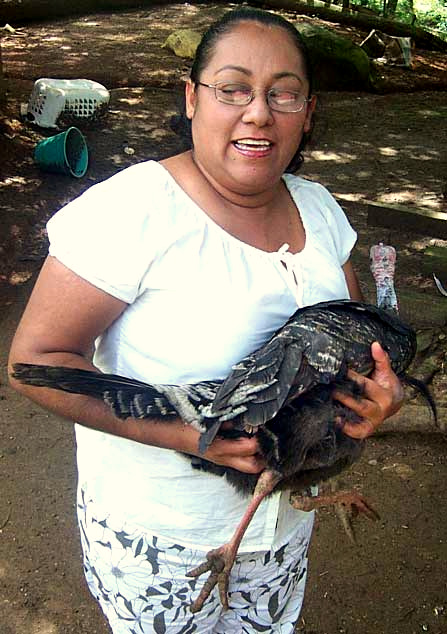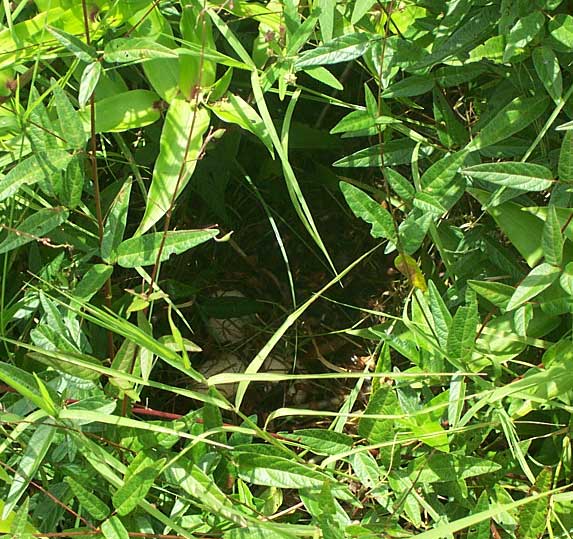Excerpts from Jim Conrad's
Naturalist Newsletter
from the October 22, 2007 Newsletter, issued from Pueblo Nuevo Solistahuacan, Chiapas, MÉXICO
THE LAYING OF A TURKEY EGG
Inés told me that one of her turkey hens was laying eggs somewhere out in the overgrown abandoned garden and she, Inés, wanted to find the nest and move it into the chicken pen so the dogs wouldn't get the eggs. Already after just a few seconds of my inattention a dog had stolen a fresh egg from my table, broken it on the ground and lapped it up, so we knew that the egg-eating-dog scenario was a possiblity.
Once the nest was found each day Inés would remove that day's egg as soon as it was laid and save it inside her house. When a dozen eggs were collected she'd move them all into a corner of the pen and put the turkey hen atop them. Over the hen and her nest Inés would place a box fixed so the hen could look out through slits but not get off her nest, and then after three days of sitting on the nest the hen would continue incubating her eggs.
But first we had to locate the nest somewhere out there in half an acre of waist-high weeds. Happily, Inés knew the trick for doing that.
I arrived about ten in the morning expecting us to put the trick to use right then but Inés stepped outside, looked at her pen for a few seconds, and said her turkey wasn't ready. We'd know when she was ready because she'd cluck in a nervous manner and pace back and forth.
When three hours later when I descended the slope again from fifty yards away I could hear an anxious turkey clucking and when we approached the pen the hen was pacing back and forth. She didn't really need to do so, because we already could see that the hen needed to lay her egg immediately, but Inés showed me how she could put her finger up the hen's rear end and actually feel the hard egg right at the opening, "coronado," Inés called it, "crowned." You can see this operation below:

Inés placed the turkey on the ground and then we watched. That old hen with her tail bent curiously low zigzagged all over the yard before she even entered the garden, then zigzagged some more, and went to the far end and circled back with her head held low. Obviously she didn't want us to know where her nest was. Then I lost sight of her but Inés didn't. After maybe fifteen minutes Inés announced that the hen had settled down inside a particularly thick clump of weeds beneath the spreading guava tree.
We went and stood about ten feet away and could hear the hen quietly clucking. "In about fifteen minutes," Inés diagnosed, and she was right on the mark.
The turkey hen clucked a few minutes, then was quiet, and finally began clucking in a different way, louder and somehow contented-sounding. Now finally I could see her as she dragged straw and grassblades over her nest for a little added camouflage. Then she sneaked away still keeping her head low, but now with her tail held normally.
You can barely see the three eggs her nest contained, viewed through an opening in the weeds, below:

Below you see the eggs' speckles and how the hen had spread straw over them.
